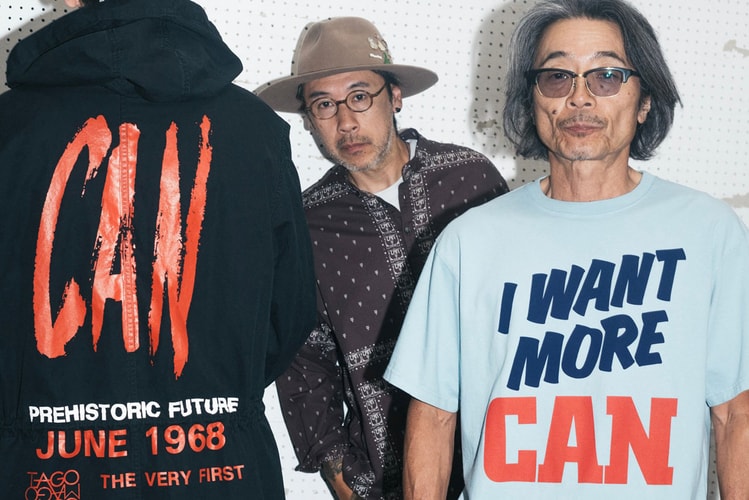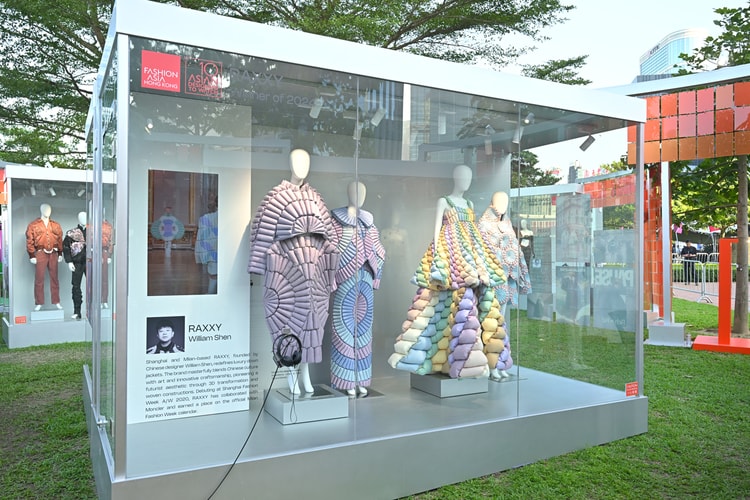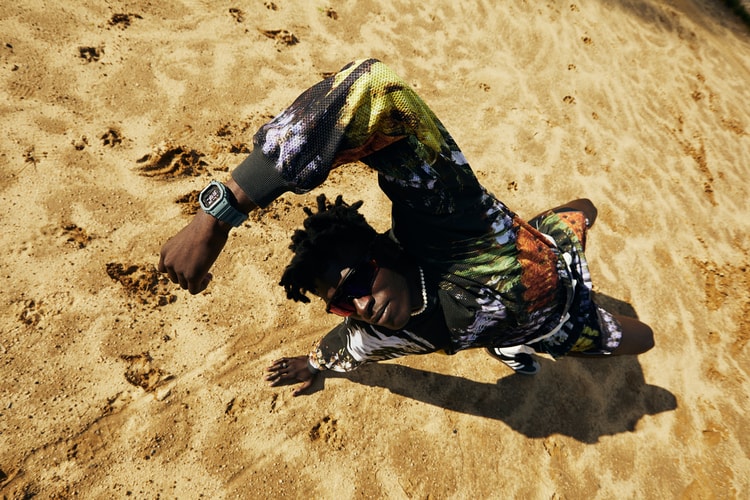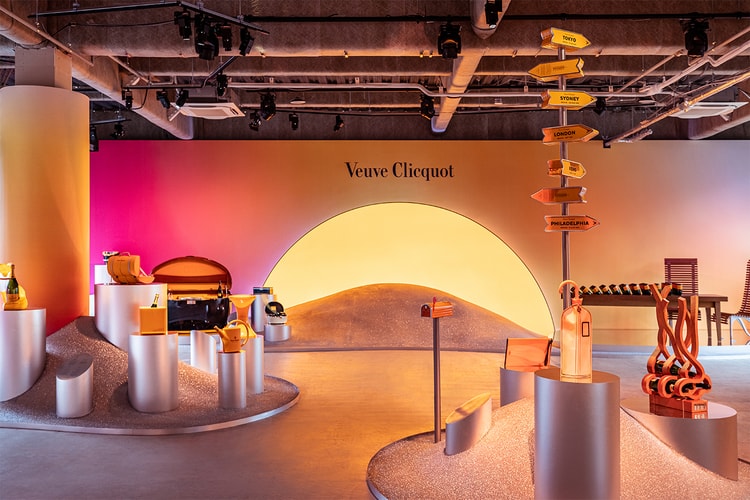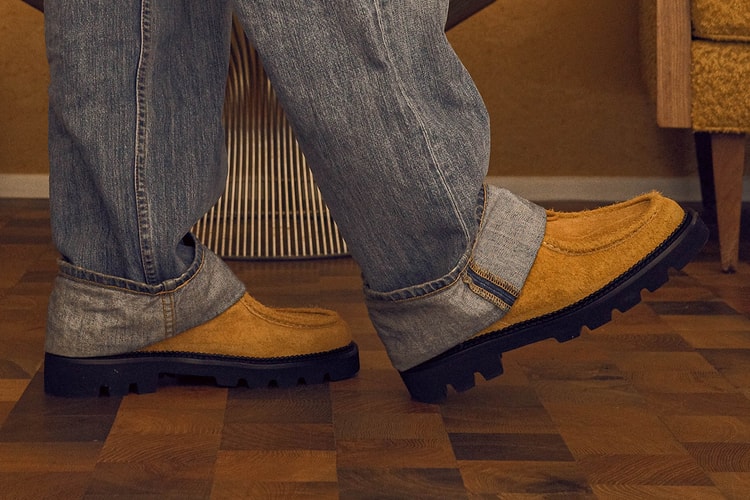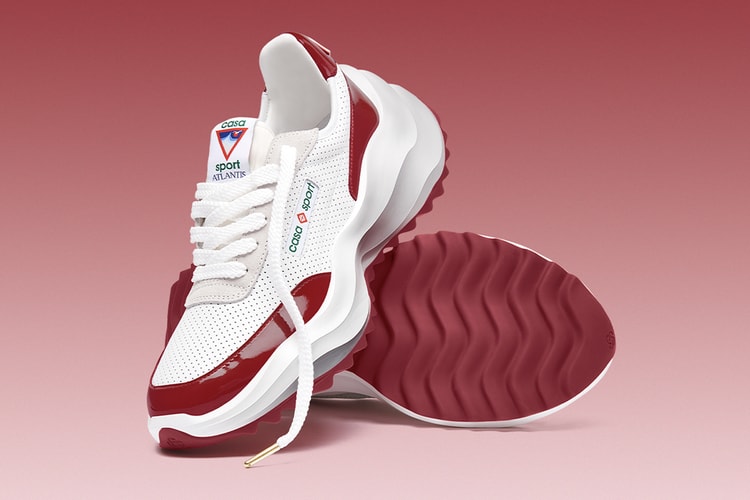Can Seaweed Become the Future of Sustainable Fashion?
Plucked from the seabed, algae is now being used to create an entirely different type of drip, custom-built for the future.




Can Seaweed Become the Future of Sustainable Fashion?
Plucked from the seabed, algae is now being used to create an entirely different type of drip, custom-built for the future.
Seaweed won’t be the first material that comes to mind when you’re thinking of sexy, sartorial innovation. But around the globe, the natural material is having a real moment right now, bubbling up in a space rich with technological advancement as the impact of climate change bears down on humanity.
Having become a key part of rising UK skincare brand, Haeckels, and their list of all-natural ingredients, as well as an alternative protein among health fanatics, Seaweed is now being used in a whole new capacity, in the world of fashion.
On the whole, Seaweed is attracting new money and fresh purpose from Margate to Maine due to its potential to help confront contemporary environmental issues as an alternate material. While synthetic textiles like polyester are made from fossil fuels – with an incredible 60% of all clothes now composed of fossil fuels – seaweed fibre offers an alternative to this as one of the fastest-growing, regenerative organisms on earth, that is both eco-friendly and naturally biodegradable.
“With 60% of all clothes now made from fossil fuels, seaweed offers huge potential as an alternative material. It’s one of the fastest-growing, regenerative organisms on earth, that is both eco-friendly and naturally biodegradable.”
The demand for seaweed is now reaching unprecedented levels. Globally, seaweed production has grown by nearly 75% in the past decade. From a UK perspective alone, a recent report commissioned by the Scottish charity, the Sustainable Inshore Fisheries Trust (SIFT), outlined that since November 2018, applications in Scotland alone have been submitted to grow and harvest seaweed “in an area covering more than 2 million square metres of the Scottish marine area and the sector is expected to continue growing.”
One of the key figures promoting artists working within the world of seaweed is Seaweedworks, a new project promoting innovative and sustainable uses for seaweed, founded by Charlie Strand. Charlie began working in sustainable fashion 25 years ago under Katharine Hamnett and has since published two books and a magazine and worked with a wide range of brands including Dior, Shiseido and Edwin Denim.
For the last five years, Charlie has been working on developing and promoting sustainable uses for seaweed. Seaweedworks is his outlet to promote creatives using seaweed through events and special projects. “I’ve been working with seaweed and research and development for about five years, everything from harvesting it to running tests, and seeing how durable it could be, and how it could sort of work within fashion and design”, he explains, “I wanted to connect with people who have already been also like myself experimenting and seeing if we can exchange ideas, rather than having a competition.”
View this post on Instagram
Small, independent brands and creatives are key to driving the most progressive innovation with seaweed, while bigger corporations continue to play catch up. But while Seaweed’s inherent sustainability is all well and good, can it look good, wearable and durable as an item of clothing?
One man trying to answer that question is Tanguy Mélinand, a French fashion designer and Geneve University of Art and Design graduate who won the Gold award for sustainable design at the Yinger Prize in 2022. Tanguy harvests seaweed from the ocean and then applies a unique preservation process before designing intricate garments with the material.
Tanguy recently showcased his work at the Reykjavik EDITION as part of Iceland’s DesignMarch festival, where he partnered with Seaweedworks to open up about his work with algae. Iceland’s design festival brings together participants and guests with progressive design from all other the world – and if there’s any place in the world primed for a seaweed-style revolution, it’s Iceland.
A massive amount of algae surrounds the country’s coastline and plenty of local designers experimenting with the material. Renowned for its tectonic activity, Reykjavik was turned into a hotbed of innovation during DesignMarch – with Tanguy’s clothing standing out amongst a crowded field.
Tanguy utilised seaweed which he collected and preserved himself and then applied intricate design techniques to complete full garments from the material, from shoreline to sewing machine. “I grew up close to the ocean, In Brittany. I used to go surfing and fish. There was always loads of seaweed where I grew up, so I think my initial fascination with it started there,” Tanguy says, while holding aloft strands of seaweed he’s plucked for the exhibition that he will later turn into wearable bags at the event.
“I met with a seaweed farmer who taught me how to cut seaweed perfectly to let it grow again,” he explains. “He taught me about the process of the life and death of seaweed.” Working locally has its limitations, of course. “In Iceland the water is much colder, so there is much more seaweed already there. In France, you can collect seaweed for four months [of the year], depending on the species.”
Visually, the results are pretty incredible: Tanguy’s sun-soaked seaweed jackets arrive in different hues of olive and yellow, and look somewhere between the striking fabric composition of a C.P. Company Kan-D transparent garment dyed fabric while retaining the bulbous, earthy aesthetic that rising UK designer Charlie Constantinou uses in his LVMH-prize nominated jackets.
Unlike many other seaweed and clothing hybrid collaborations out there at the minute, Tanguy’s recent clothing collections look and feel both functional and wearable. His first seaweed collection, the graduate project for his BA from HEAD attracted the attention of the Yinger International Fashion competition, an international fashion awards programme in China, where he was awarded the Gold Prize.
As well as exhibiting during Design March, Tanguy has been working on a collaboration with fellow HEAD graduate, Weber Xavier, involving compressing seaweed together with rolling papers, sponsored by OCB – which has created several slick new designs that blend sea and weed together like never before.
View this post on Instagram
Working with seaweed is currently a fairly laborious task – with plenty of differing methods of collection and preserving to turn seaweed into a fabric-like material that can be used within clothing. “It’s like a mad scientist approach of tweaking it,” Charlie explains, while talking about the process, “It’s not a random process. I tend to do ten different blocks for every single batch, so that I can go, OK, even ten per cent more water will make it more flexible, however, it might make it a bit weaker.”
The full process of creating a jacket out of seaweed is also anything but pacy. “It takes 160 hours to make one jacket. Wow, even saying that out loud is crazy,” Tanguy laughs. “Yeah, it takes time – but the jacket isn’t the worst.”
It certainly isn’t. Tanguy’s final work may have taken its time to bubble up, but his collection shimmers with a beautiful, bespoke design that belongs on the runway. “Creating these jackets out of seaweed is hard to do. The stitching takes forever, and the material is difficult to use. But the process is getting better, and faster, the more we’ve been working with seaweed as a material.”
Tanguy’s pieces are also pretty durable. “The seaweed pieces I have are almost two years old and remain in perfect condition’, Tanguy says, “but if you decided to compost them, then they will decompose between just three weeks and two months.” Seaweed as a material is like a tough leather – but also can have a more silky texture, ”while not as strong, it’s easily comparable to more delicate fabrics used in fashion. It’s a matter of using the right type and thickness that the garment requires,” says Charlie.
“Creating these jackets out of seaweed is really hard to do. The stitching for one jacket can take up to 160 hours, and the material is difficult to use. But the process is getting better, and much faster.”
Seaweed is, as The New York Times have suggested, ‘Having Its Moment In the Sun’ as a source of sustainable innovation attracting new money and uniting purpose-driven people all around the world. But Tanguy insists its use must be regulated and production needs to be controlled “so the industry doesn’t advance beyond its means.”
Tanguy’s intricate work clearly showcases that seaweed can slot in seamlessly in a fashion context, too. “His work catches your eye – it’s so exciting,” Charlie says. “We’re not necessarily saying that we think we would be able to make a whole collection of seaweed overnight, but maybe a stepping stone to get people more aware is through work like Tanguy’s.”
Both Tanguy and Charlie agree that with more and more investment from bigger entities and corporations, their craft will thrive, with the sheer abundance and versatility of seaweed – and the ability to collect it without harming the growth – makes it one of the most future-proofed materials in existence.
What seaweed needs is the backing of big businesses to take it from a niche experiment to an industry standard. “The race is on, I suppose, to get the world’s first commercial supply,” Steve Meller, an Australian-American businessman in Australia, grows seaweed in giant glass tanks on land, told the New York Times, “The demand is off-the-roof scale.”
It’s clear that while demand continues to peak, we see more and more emerging designers start experimenting with seaweed as a viable product for the future of sustainable fashion.“If there was like someone who would give us a little bit more of a facility, then the speed at which this kind of progresses could really ramp up,” Charlie tells Hypebeast, “It could be three years away from something you’re at least putting on a catwalk as an entirely sellable collection.”
So can seaweed become the future of sustainable fashion? It seems that we’re just at the beginning of finding out the answer. “Our work at Seaweedworks and with my colleagues in this field we have only just begun to discover its’ potential,” Charlie asserts, “Once you factor in more research and development, technical testing and even growing specific types and larger sizes of seaweed it makes for a very exciting possibility.”
Return economy fares from London to Keflavik with Icelandair start from £225pp. To book visit icelandair.co.uk

















